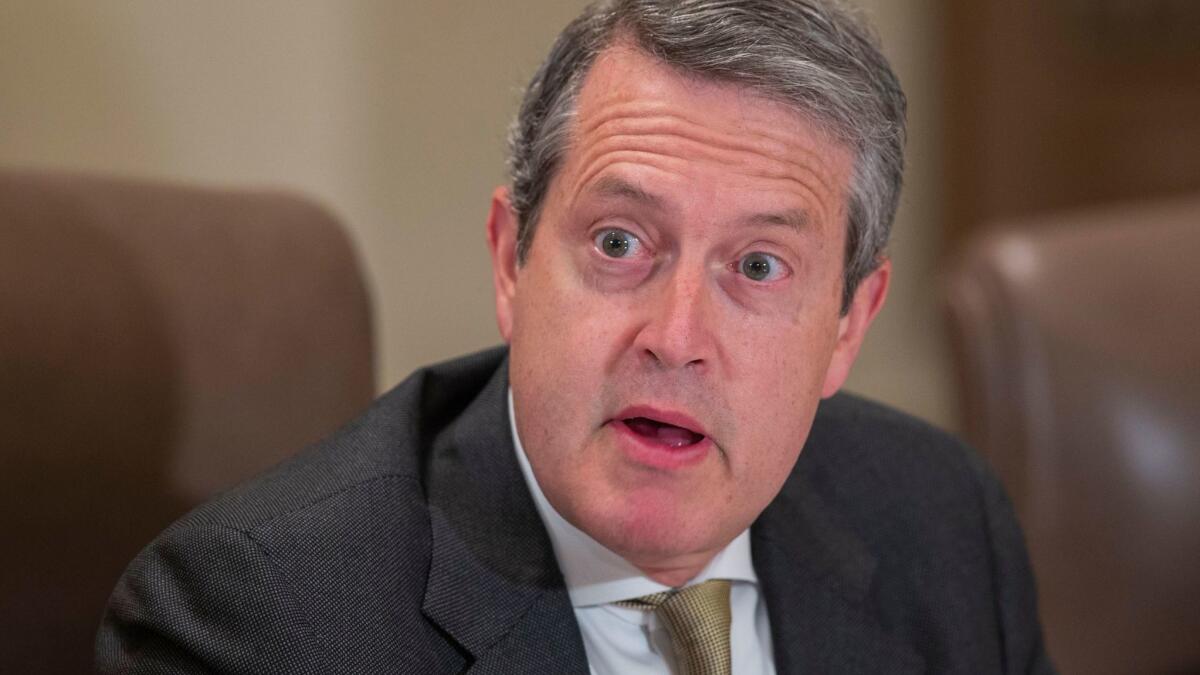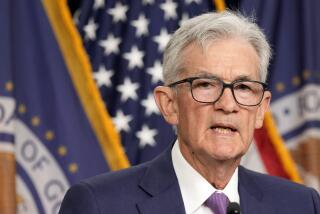Federal Reserve official outlines plans to ease burden of bank stress tests prompted by financial crisis

Wall Street banks will have to wait a bit longer for regulators appointed by President Trump to make the Federal Reserve’s stress tests less stressful. Their reward for being patient could be many more concessions than the industry anticipated.
Randal Quarles, the Fed’s vice chairman for supervision, said Friday that a planned overhaul of the annual exams won’t be in place until at least 2020, instead of next year as the central bank had planned.
But in good news for Wall Street, he said the revamp could target three issues that have long frustrated bankers: the possibility of having dividend and share-buyback plans publicly rejected, the testing process’ lack of transparency, and reducing the stigma of failing what’s known as the qualitative part of the assessments.
Quarles stressed, however, in remarks made at a Brookings Institution event in Washington, that the changes are “not intended to alter materially the overall level of capital in the system or the stringency of the regime.”
Implemented after the 2008 financial crisis, the Fed uses the exams to assess whether banks have enough capital to withstand the losses that would be triggered by a severe economic downturn. That has led to some embarrassing headlines for banks that have failed the tests.
Quarles said the Fed is considering letting banks know their stress-test outcomes before they plan their capital distributions. That would reverse one of the most dramatic aspects of the tests in which lenders have to guess at the amount of capital they can return to shareholders through dividends — and risk the Fed publicly rejecting their plans.
In an April proposal, the Fed had already made stress-test concessions, including removing the expectation that lenders would grow their balance sheets and keep paying dividends when facing major economic stress. The agency’s proposal would also erase some of the different capital thresholds that banks must stay above.
Quarles said Friday that he favors eliminating a requirement for a public announcement when banks fail the qualitative part of the tests, which measures each firm’s ability to manage capital in a crisis. He said he supports “removing the public objection tool, and continuing to evaluate firms’ stress testing practices through normal supervision.”
To boost transparency about the test, Quarles said the Fed intends to give banks “portfolios of hypothetical loans and associated loss rates.” The Fed has been hesitant to reveal much about its tests because of fears that providing too many details would be akin to giving banks the answers before the exam. Quarles said Friday that he’s always been “skeptical” of that concern.
Quarles also said the Fed plans to delay a related rule change that will force the biggest banks to hold more capital. He said comments “have flagged certain elements of the regime that could benefit from further refinement.”
The Fed has proposed that its risk-based capital regulations be tied to its stress tests. The result — a new “stress capital buffer” based on each firm’s performance in the tests — is expected to result in megabanks having to boost capital. But for the rest of the industry, the changes would result in capital cushions falling by tens of billions of dollars.
Smaller banks could get another rule change in their favor.
For banks with less than $250 billion of assets, including SunTrust Banks Inc. and Fifth Third Bancorp, the Fed is seeking to reduce the frequency of stress tests to every other year. Quarles said he is urging the full Fed board to make 2019 an off year for such lenders, meaning they wouldn’t be tested again until 2020.
Quarles is scheduled to appear at hearings in the House and Senate next week to update oversight committees on the Fed’s regulatory efforts.
More to Read
Inside the business of entertainment
The Wide Shot brings you news, analysis and insights on everything from streaming wars to production — and what it all means for the future.
You may occasionally receive promotional content from the Los Angeles Times.










